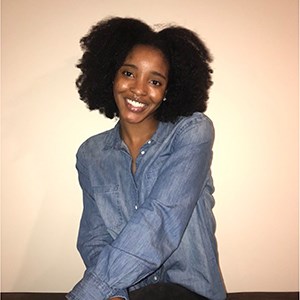
Alanna Bond
Mississippi State University
Vicksburg National Military Park, Mississippi- [Geodiversity Atlas] [Park Home]
I graduated from the Mississippi State University with a Bachelor in Biological Sciences and a minor in Spanish. As a Research Assistant in the Department of Biological Sciences, I recorded the effects of sound pollution on grasshoppers and monitored the relationship between aphids and lady beetles. I also recorded and analyzed carbon dioxide respirometer data, surveyed the number of aphids on bean plants from experiments, and grew fava bean plants for experiments. I have also worked as a Research Assistant in the Department of Biochemistry, Molecular Biology, Entomology and Plant Pathology in the genomic research of Tawny Crazy Ants. Insects are a great indicator of how an environmental system is working, and I believe that it is important to explore and research these organisms to understand the various factors that can affect our local ecosystems and to propose solutions to environmental problems. I will be attending a biological master’s program in the fall, where I hope to obtain a Master’s degree. I look forward to contributing to my field, not just in North America, but also in South America or the Caribbean.

Alexandra Isabel Verdeja Pérez
Purdue UniversityBiscayne National Park, Florida-[Geodiversity Atlas] [Park Home]
I am originally from Puerto Rico and graduated from Purdue University in Fisheries and Aquatic Sciences with a minor in Wildlife Sciences in 2020. I have focused on obtaining experiences like studying abroad at the University of Canterbury, Christchurch, New Zealand where I learned about Marine Biology, Animal Physiology and Geology. At the Aquatic Ecology Research Laboratory, I developed data collecting skills by performing necropsies on channel catfish (Ictalurus punctatus) and classified the aquatic and terrestrial invertebrates found in the catfish stomachs using a stereoscope. I was also an intern at the Sensory Ecology Laboratory in Statesboro, Georgia where I expanded my knowledge of saltwater husbandry by maintaining feeding schedules and water chemistry for whitespotted bamboo sharks. While a student in The School for Field Studies, Center for Sustainable Development in Costa Rica, I applied sustainable research techniques and strategies through field work in the Monteverde Cloud Forest and investigated the feeding habits of hummingbirds in tourist prone areas for species conservation purposes. My long-term career plan is to become a coral reef ecologist and work in conservation and restoration work.
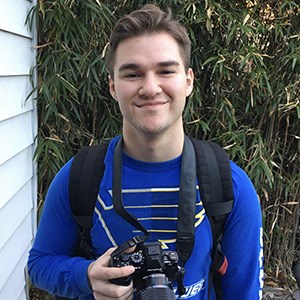
Caleb Bolin
Truman State University
San Juan Island National Historical Park, Washington-[Geodiversity Atlas] [Park Home]
I am currently a junior attending Truman State University in Kirksville, Missouri where I am majoring in Agricultural Science with an emphasis in Agricultural Business and minoring in Photography. I have worked at the Truman State University Greenhouse since 2018. I cared for experimental, tropical, and main room plants and soil plot displays as well as propagating herbaceous and non-herbaceous plants by division and cuttings (leaf and stem) and creating and maintaining propagation bins. An interesting feature of my job included photographing and cataloguing plants and collection specimens. My experience with photography stems from working at the Truman Media Network/The Index Newspaper Photographer as a photographer and as a recognized News Editor and Political Columnist by winning the All-Missouri Feature Writing Award in 2016. After I finish my undergraduate studies, I would like to do field work as a conservation photographer and also work in wildlife and natural resources management. I have always been touched by photographs of beautiful places and creatures, and it is my hope that through my own photographs, I can help more people become passionate about nature and its conservation.
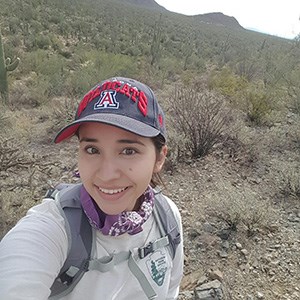
Celeste Meyer
University of ArizonaSaguaro National Park, Arizona-[Geodiversity Atlas] [Park Home]
I have a Bachelor’s in Conservation Biology from the University of Arizona. I recently took an insect biology class that opened an undiscovered world of amazing creatures. This led me to volunteer at Saguaro National Park in 2019. While volunteering at Saguaro, I met many people who share my passion for the desert environment. It is inspiring to work alongside others who have a deep understanding and knowledge of the environment and its wildlife. I would like to further develop my skills in field work, teaching about wildlife, data collection, leadership, and the ability to adapt to different environments. In the future, I plan on continuing my education and to be a biologist who can make a difference. I am sure that working with Saguaro National Park and Environment for the Americas, I can continue learning about impacts on the environment and wildlife.

Cory Zaller-Edmonds
Hiram college
Mount Rainier National Park, Washington-[Geodiversity Home] [Park Home]
I graduated from Hiram College with a BA in Environmental Studies. After four years of college, I realized that spending time outside and working outdoor is what I want to do for the rest of my life. I was a Mosaics intern in 2019 at Mount Rainier National Park where I learned how to monitor bat colonies and test for White-nose Syndrome. As a returning intern, I would like to further my knowledge by testing for microplastics and how they affect the food chain in water supplies at the park. I would also like to put into practice my experience as a Wildlife Diversity and Conservation intern (2018) as a bird bander and from the Stream Restoration Monitoring project at my university. This opportunity gave me field experience studying the effects of an experimental stream blockage of a restored stream and assessing stream health by performing electrofishing studies, algae counts, and by measuring stream width, velocity and turbidity of multiple sites. In the future, I want to work in a field-based job with the National Park Service where I can work outdoors and continue to contribute to conservation science.

Daniel Hubner
Brigham Young UniversityHawai’i Volcanoes National Park, Hawaii-[Geodiversity Atlas] [Park Home]
I graduated from Brigham Young University with a Bachelor’s Degree in Media Arts Studies in December of 2017. After graduation, I moved to the “Big Island” of Hawaii to be near family. I also started volunteering at Hawaii Volcanoes National Park as a park interpreter. Initially, I helped orient visitors and led ranger programs in various parts of the park. However, the eruption of Kilauea Volcano in 2018 presented me with an opportunity to put my educational training and experience to work by creating interpretive media that helped clarify the complex geological events that were happening inside and outside the park. Since then, I have created multiple videos that have been featured in the park visitor center and on the park’s website. Each project has made me feel a greater sense of understanding of the world around me, and I want to share this feeling with others. I would love to help develop an educational curriculum that would be a great resource for visitors, educators, and the local community. I also hope that this position will lead to a future career with the park service at this park and beyond.
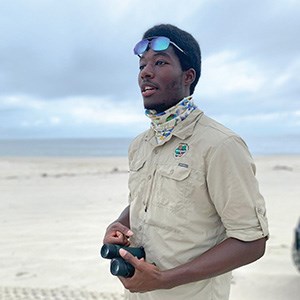
Justin Wilson
Purdue UniversityFire Island National Seashore, New York-[Geodiversity Atlas] [Park Home]
I graduated with my Bachelor of Science in Natural Resources and Environmental Science from Purdue University in May 2019. My current professional interests are geared toward graduate school, most likely for a Ph.D. in psychology. I have always found personal relief being in nature, and I believe that other people can find similar feelings, perhaps with some guidance and empathy. One of my passions has always been understanding people and what drives them, which helps people understand themselves and each other. My academic and personal trials so far have been in accomplishing these same things for myself: figuring out who I want to be, what compels me to reach my goals, and how I’ll reach those goals. Now that I have a better understanding of who and what I am, the Mosaics in Science program will be the first step in shaping my career and life.
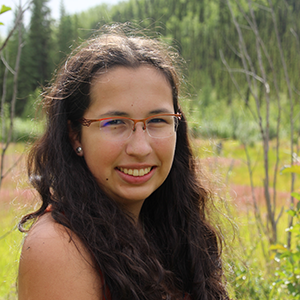
Lynneva Carrol
University of Alaska FairbanksCentral Alaska Inventory & Monitoring Network, Alaska-[Park Home]
I am an undergraduate college freshman at the University of Alaska, Fairbanks, working toward a degree in Biological Sciences. Having lived in Alaska my entire life, I have grown up aware of the impacts of climate change on the state and I am interested in studying these effects to help develop plans to counter their impacts. In 2019 I was an intern at the Murie Science and Learning Center in Denali National Park and Preserve. There, I processed bird eggs for determining embryonic stage and tested for heavy metal and organic contaminants. The National Park Service has offered me opportunities as a small mammal volunteer and in the snowshoe hare ecology project. It is where I learned to wrangle and pit tag voles caught in the live traps and to backpack and complete small mammal population surveys. I have camped at the beautiful Marion Creek Campground and visited sites around Coldfoot, Alaska. In the future, I would like to conduct research in biology and ecology addressing the impacts of climate change on humans, wildlife and the environment. In addition to providing me with experience working in the field, the Mosaics in Science internship will also expand my ability in field work and processing data, as well as hone my public communication skills.
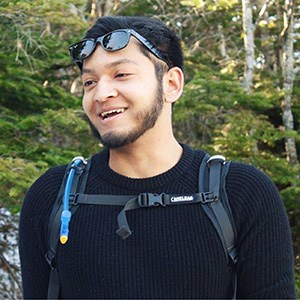
Maaz Fareedi
Northeastern Illinois UniversityMammoth Cave National Park, Kentucky-[Geodiversity Home] [Park Home]
I earned my Bachelor of Science in Earth Science in December 2019 from Northeastern Illinois University. I plan to attend graduate school within the next 5-10 years, but, before I do so, I’d like to gain experience through field-related work in order to determine what I want to specialize in. My Mosaics in Science internship in 2018 opened my eyes to the variety of important tasks the National Park Service and other land management agencies perform to preserve and showcase public lands and resources. During the MIS internship, I developed a knowledge for determining the structures and geochronology in a karst landscape. In addition, I was taught how to cave, monitor bats, decontaminate for White-nose Syndrome, control invasive species, educate park guests, and more. In 2019 I was an intern for the USDA National Soil Erosion Research Laboratory where I performed independent studies on atrazine and heavy metal adsorption using bio-char. I know I can contribute to science in many ways and in any of the four languages I speak (English, Spanish, German and Urdu). I am focused on having a career where I can develop valuable networking opportunities and the pride in serving our nation and our people. I’m looking forward to a spectacular summer with the Mosaics in Science program. Here’s to round two!
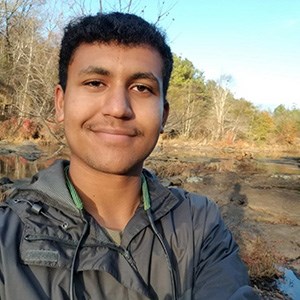
Matthew Butzin
Abraham Baldwin Agricultural College
Great Smoky Mountains National Park, Tennessee-[Geodiversity Home] [Park Home]
I am currently a senior at Abraham Baldwin Agricultural College (ABAC) in Tifton, Georgia, pursuing a Bachelor’s degree in Natural Resource Management with a degree concentration in wildlife. Through my education at ABAC, I have gained a working knowledge of many aspects of and techniques in wildlife management, including various sampling procedures, identification of hundreds of species of native flora and fauna, as well as an understanding of implementation of forestry principles, including prescribed fires. My primary interest in the Mosaics in Science program is a desire for hands-on career experience, which will ease my transition from college to a meaningful career in wildlife management. Although my degree is in wildlife management, my ideal career is specifically within the field of fisheries management. I have always had a love for the conservation of wildlife and natural resources; for this reason, I hope to use my abilities and experiences to further the conservation and wise use of our fisheries and aquatic resources, so that these resources are available for future generations to enjoy and conserve.
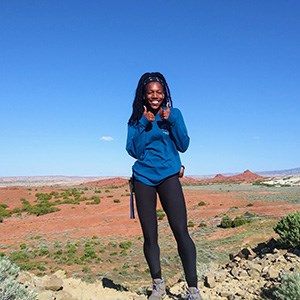
Saida Burns-Moore
University of Memphis
Wind Cave National Park, South Dakota-[Geodiversity Atlas] [Park Home]
I graduated from the University of Memphis from the Department of Earth Sciences with a concentration in Geology. In 2019, I was the recipient of the Chi Beta Phi Science Excellence in Geology Award, the Geological Society of America Minority Student Scholarship Award, and recipient of the Geological Society of America Field Camp Scholar Award. My geology background was forged by field experiences where I measured the stratigraphic section of Black Hills in South Dakota and collected and identified samples of Precambrian granite, pegmatite, and metamorphic rocks. I’ve also conducted hydrological projects measuring dissolved oxygen, nitrate and phosphate content. This project also incorporated measuring discharge of Spearfish Creek using a current velocity meter and recording the depth, width, and velocity of the stream. I have collaborated on various geological mapping projects in Black Hills, South Dakota; Bighorn Mountains, Wyoming; and Pryor Mountains, Montana. In the future, I plan to use my education and experience to provide classes and programs that will pique the interests of minority youth in urban environments, where they may often not have access to these resources.
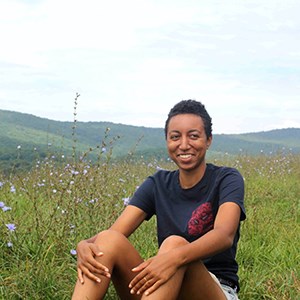
Sydney Fuller
Grinnell College
Northern Great Plains Inventory & Monitoring Network
Mount Rushmore National Memorial, South Dakota-[Geodiversity Atlas] [Park Home]
I graduated in December 2018 with a Bachelor of Arts in Environmental Sustainability from the University of Michigan and a degree in Art from Grinnell College. My professional goals include working intimately with plants, either through agriculture, land stewardship, or food activism. While in school at the University of Michigan, I worked on several small organic farms. Coming from a suburban childhood and a family that is not traditionally “outdoorsy,” this work gave me a new respect for the land and for those who take care of it. The versatility of my skills correlate with my job experiences; from a store associate teaching candle-making workshops, a Social Media & Student Farm Manager planning events and leading tours, to a Doris Duke Conservation Scholars recipient who facilitated conversations about diversity, equity, and inclusion within the conservation movement, while creating a scientific poster using research from multiple projects. I am passionate about environmental justice, about helping people and the planet. For me, environmental issues are inextricably tied with social issues and working at a National Park seems like a perfect opportunity to learn about these interactions in a close way. I was also excited to work with a group of environmentalists and scientists who appreciate the value of diversity, equity, and inclusion in their work.

Yair Torres
Texas A&M University
Southeast Arizona Group, Arizona-[Park Home]
I am currently a graduate student at Texas A&M University (TAMU) pursing a Master of Science degreein Geography. I also conducted my undergraduate studies at TAMU and earned a Bachelor of Science degree in Environmental Science and a minor in Geographic Information Science & Technology. For the last three years, I have been a member of the Fluvial Landscapes and Dynamics Research Group at TAMU, in which I have conducted geomorphology related research projects in and around Texas. In 2017, I was an intern at the Bridge to Research in Marine Science, where I authored a report and conducted a seminar presentation: Developing a cost- effective, short-term, high-spatial-resolution, surface-flow recorder for a tidally influenced riverine-estuarine system. As part of the Aggie Research Scholars Program, I participated in team-based research of field-based channel surveys of a coastal-plain river in Texas and presented findings at the American Association of Geographers’ 2018 Annual Meeting. Given my background in fluvial geomorphology, my M.S. thesis seeks to study the changing morphodynamics of Arctic rivers and relates to changes in hydrology and permafrost thaw. After the completion of my M.S. in Geography, I plan to work as an environmental scientist performing field-based research or consulting. Additionally, if a funding opportunity arises, I would like to pursue a PhD in an environmental science related sub-field, such as geomorphology, hydrology, or geology.
DHA Resource Assistant Intern Profiles (*Direct Hire Authority)
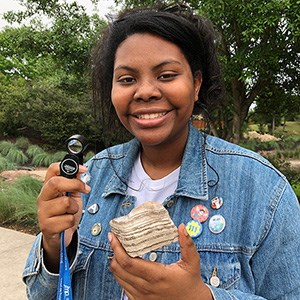
Amani Canada
Trinity University in San Antonio
Padre Island National Seashore, Texas-[Geodiversity Home] [Park Home]
I graduated from Trinity University in San Antonio, Texas where I obtained a double major in Environmental Studies and Earth Systems Science. Learning and interacting with different spheres and interests has led me from researching garnet geochemistry to creating maps and demonstration gardens to sea turtles and social media. In the fall of 2018, I was in Santa Catalina Island where I researched the geologic history of California. After doing the data analysis, I designed the layout of the research poster in order to be visually appealing and easy to read by any public. I presented this work at the American Geophysical Union 2018 Conference as lead investigator. I believe that science is at its most effective when the public can understand and interact with it. My areas of knowledge include cartography, geologic field research, photo and copy editing, graphic and layout design and digital photography. Additionally, I want to diversify and build upon skills and knowledge in other fields related to natural resource management, conservation, and resilience to climate change. In the fall of 2020, I will start a Master’s degree in Geography at Texas A&M University at College Station, Texas. I will be conducting research in human-environment interactions, flood risk, and climate resiliency.
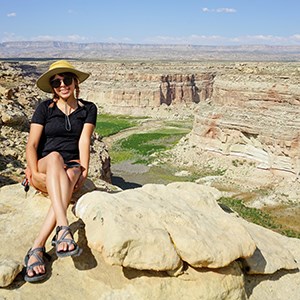
Tania C Parra Ramírez
University of California, Santa Cruz
Glen Canyon National Recreation Area, Arizona-[Geodiversity Atlas] [Park Home]
I have a Bachelor of Science degree in Ecology and Evolutionary Biology from the University of California, Santa Cruz. I am currently working on my Master of Science in Environmental Science and Technology at California State University, Fullerton. I am interested in pursuing a career in conservation with the National Park Service. This summer I will be conducting research at Glen Canyon National Recreation Area where I will look at patterns of habitat use by bats. This will be my second year at Glen Canyon National Recreation Area, and I will continue the work that was started in 2016 by the Park. Once completed, I will analyze five years’ worth of acoustic monitoring data within the Park’s boundary. I am excited to return to Glen Canyon where, last year, I had the opportunity to learn valuable bat monitoring skills and was able to share this information during the annual Bat Festival. In addition, I participated in citizen science events where I talked to teenagers about conservation and bat ecology. I look forward to doing this again this summer. I am interested in this program because it gives me the opportunity to work alongside NPS scientists. The Direct Hire Authority certificate will help me further my career with the Park Service.
Last updated: June 3, 2021
